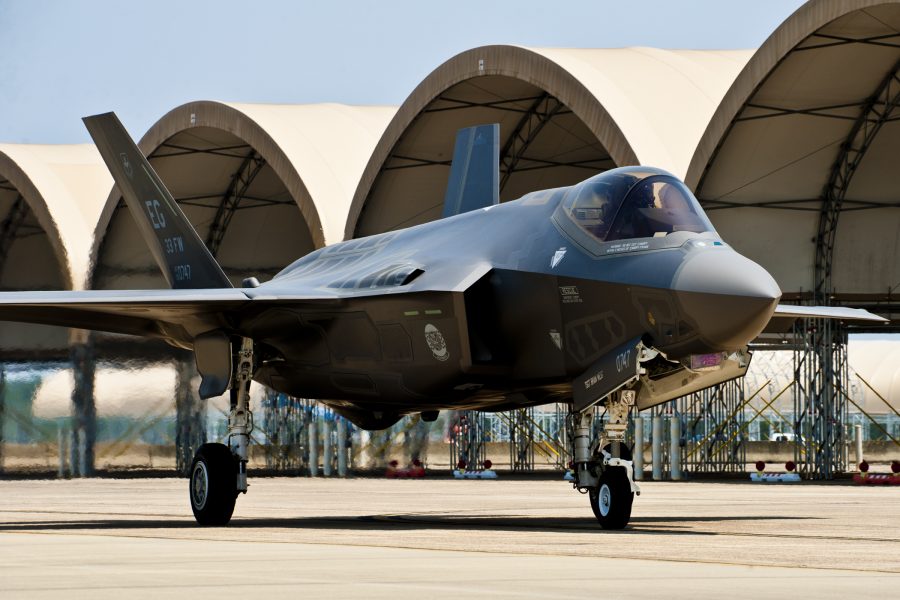Action to correct hardware problems that contributed to the crash of an F-35 on May 19 at Eglin Air Force Base, Fla., must remain secret, the F-35 Joint Program Office said Nov. 23.
“Explicit details related to corrective actions have the potential to compromise operational security,” a JPO spokeswoman said, without elaborating.
Broadly, she said, the JPO participates in accident investigations and identifies “corrective actions and evaluates, prioritizes, and incorporates those actions into aircraft maintenance and production procedures.” She added that “safety of flight remains the highest priority in the adjudication of corrective actions” and said the 585 F-35s in service worldwide have accumulated more than 335,000 safe flying hours.
The F-35 is safe to fly while the JPO determines and implements corrective measures, she said. The JPO declined to comment on whether the government or Lockheed Martin bears the responsibility for the hardware deficiencies, and who will pay to correct them. It is unusual for the government not to reveal corrective measures required when a military aircraft crashes due—even in part—to hardware and software deficiencies.
According to an accident investigation board report released in early October, the F-35 in question crashed mainly because the pilot incorrectly set a “speed hold” that was too high during the landing process.
However, the AIB identified a number of other issues with the F-35, all of which contributed to the crash. Those included a misalignment and “green glow” of the helmet-mounted display, which both caused the mishap pilot to think he was too low on landing and made it difficult for the pilot to see the landscape during the mission, which was conducted at night.
Other problems included a delayed response to the pilot’s commands to raise the nose, flight control software that overrode the pilot’s commands, and simulator instruction that differed from what would actually be experienced in the aircraft under similar conditions.
Moreover, the mishap pilot—and other pilots—reported that the F-35’s life support system requires the pilot to work too hard at breathing, causing “cognitive degradation,” or fatigue during the mission, that is markedly worse than in other aircraft, the AIB said.
Making an instrument landing approach in the F-35 isn’t easy and “could have been made more challenging” by the breathing system, the AIB reported. The pilot’s report of finding the jet physically “draining” to fly is corroborated by “emerging research” on the F-35’s systems, the AIB said. “There appears to be a physiological toll taken on a pilot’s cognitive capacities as a result of breathing through the on-demand oxygen system,” the AIB found.
At the time the report was released, the JPO declined comment and referred questions to Air Education and Training Command, which was the AIB convening authority. But AETC referred queries back to the JPO, because the JPO is responsible for necessary changes to hardware.
The AIB said the mishap aircraft was the only Lot 6 airplane at Eglin at the time. A technical change order affecting the helmet had already been published, but wasn’t deemed urgent and required a visit to depot to install. Moreover, the simulator was found to “not accurately represent the aircraft flight dynamics seen in this scenario,” the AETC report said. The mishap pilot received “negative learning” from the simulator, and might have been able to recover the aircraft if the simulator training had been accurate—another “contributing factor” in the crash, the AIB said.
